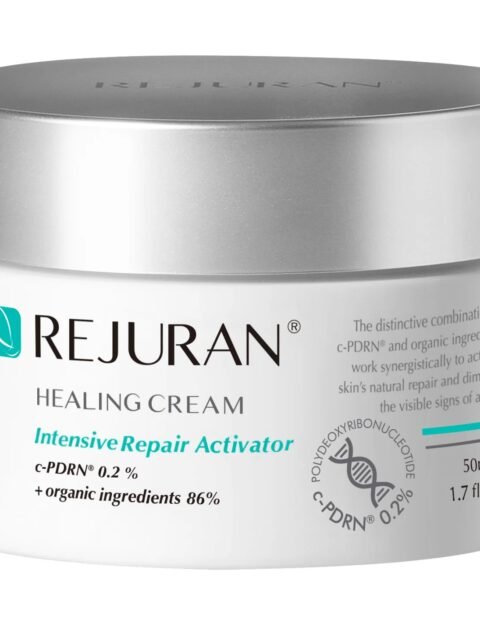
The Science Behind Hyaluronic Acid Fillers: What Every Practitioner Should Know (2025 Edition)
Hyaluronic acid (HA) fillers are the cornerstone of modern aesthetic medicine. Whether you’re a seasoned injector or just starting out, understanding the science behind these powerful injectables is crucial for delivering safe, predictable, and stunning results. In 2025, with advances in molecular stabilization and cross-linking, HA fillers have evolved significantly. This article breaks down the core science of HA fillers and what every practitioner needs to know to stay ahead of the curve.
1. What is Hyaluronic Acid and Why Does It Matter?
Hyaluronic acid is a naturally occurring glycosaminoglycan found in the human body, particularly in the skin, joints, and eyes. In aesthetic medicine, HA is used in a synthetic, stabilized form to restore volume, smooth lines, and sculpt facial features.
Key properties of HA:
- Hydrophilic: Can bind up to 1000 times its weight in water
- Biocompatible: Low risk of allergic reactions
- Biodegradable: Naturally broken down by the body over time
In 2025, HA fillers are increasingly refined to mimic the natural HA found in skin, ensuring more seamless integration and longer-lasting effects.
2. Cross-Linking Technology: The Backbone of Filler Performance
Pure HA is quickly metabolized in the skin. To increase durability, manufacturers cross-link HA chains using chemical agents such as BDDE (1,4-Butanediol Diglycidyl Ether). The result is a stabilized gel with enhanced longevity and mechanical properties.
Types of Cross-Linking:
- Monophasic Fillers: Smooth, cohesive gels (e.g., Juvederm, Revolax)
- Biphasic Fillers: Particulate gels suspended in carrier fluid (e.g., Restylane)
In 2025, newer cross-linking techniques (e.g., Vycross, RHA, IPN-Like) allow for:
- Enhanced elasticity and tissue integration
- Improved resistance to degradation
- Reduced post-injection swelling
3. Rheology: Understanding Filler Behavior in Tissue
Rheology refers to how a filler behaves under stress. For practitioners, this knowledge is key to selecting the right product for each treatment area.
Key Rheological Parameters:
- G’ (Elastic Modulus): Indicates firmness and lifting ability
- Cohesivity: How well the gel holds together
- Viscosity: Determines injectability and tissue spread
Practical Example:
- Use high G’ fillers (e.g., Juvederm Volux) for structural contouring like the jawline
- Use low G’ fillers (e.g., Teosyal RHA 1) for superficial lines or dynamic areas like lips
4. Degradation and Longevity: What Impacts Filler Duration?
While most HA fillers last 6 to 24 months, several factors affect their longevity:
- Degree of cross-linking
- Injection depth
- Patient metabolism and lifestyle (e.g., smoking, sun exposure)
- Anatomic movement of the treated area
2025 Innovations:
- Nanoparticle-based stabilizers
- Dual-phase HA formulations
- Antioxidant-infused fillers (e.g., Stylage with mannitol) to reduce free radical breakdown
5. Safety Considerations: Science Meets Practice
Understanding the structure of HA fillers helps reduce complications:
- Vascular occlusion risk: Higher with dense, less spreadable fillers
- Tyndall effect: Occurs with superficial placement of low-viscosity gels
- Lumps or nodules: Often result from poor technique or mismatched product choice
Best Practices in 2025:
- Use ultrasound guidance for high-risk zones
- Always aspirate before injecting
- Educate patients on the importance of post-care and hydration
6. Choosing the Right HA Filler in 2025: A Scientific Checklist
When choosing an HA filler, consider:
- Treatment area and goal
- Filler’s rheological profile
- Patient’s skin type and age
- Risk profile of the injection site
Popular 2025 Choices by Use Case:
- Jawline/Chin: Juvederm Volux, Teosyal Ultra Deep
- Cheeks: Restylane Lyft, Stylage XL
- Lips: Teosyal RHA 2, Revolax Deep
- Under-Eyes: Redensity II, RHA 1
Conclusion: Science Drives Results
The HA filler landscape in 2025 is both complex and exciting. With dozens of options available, scientific understanding is essential to deliver optimal, safe, and natural-looking results. The more you understand about molecular structure, rheology, and product behavior, the better outcomes you’ll achieve for your patients.
All the top-performing HA fillers discussed here are available at aestheticmedicine.shop – your trusted partner for quality products and professional insights.
Elevate your practice with knowledge. Browse our product range or talk to our experts today.




